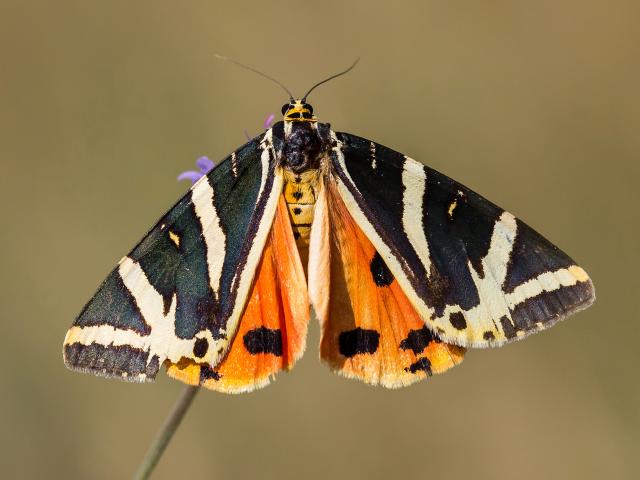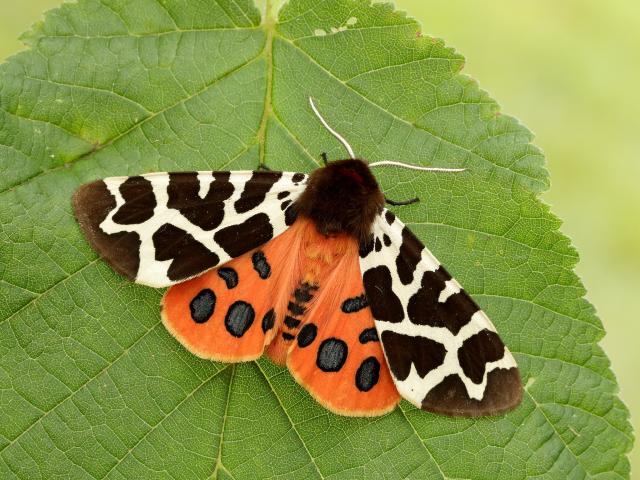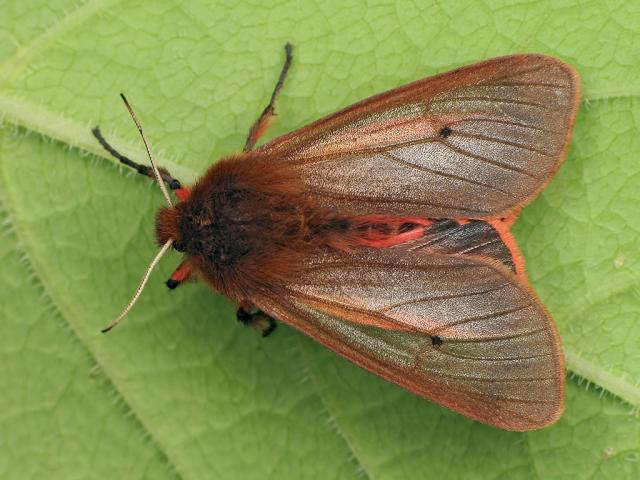Tigers are arguably our most striking and charismatic moths with beautiful patterns and fascinating lifestyles.
The Jersey Tiger, Garden Tiger and Ruby Tiger have suffered dramatically differing fortunes in recent years as climate change and habitat loss have impacted on their lifestyles.
All three of these beautiful moths can be seen in British back gardens. And with tiger moths its often a case of once seen, never forgotten – the tigers are the supermodels of the moth world.

The Jersey Tiger is the species most likely to turn up in your garden during the daytime and at first glance, it resembles a butterfly. This dramatically-coloured day flyer boasts jet black wings streaked with white tiger stripes. In flight it reveals dramatic vermillion hindwing flashes. Check your Buddleia for this species.

The Garden Tiger is big and beautifully patterned. The adults emerge late at night and are often encountered at moth traps. The moth is unmistakeable. Its wings sport dark brown spots and blotches on a cream background, with the hindwing flashing red with bluish spots. Its bright colours are a sign to predators that it is distasteful. Garden Tiger caterpillars are so hairy that they have become widely known as ‘woolly bears’.

The Ruby Tiger is smaller than the other two species. As its name implies this is a ruby-red coloured moth. Specimens from northern England and Ireland are generally darker than their southern counterparts. This Ruby Tiger sometimes flies by day but is generally seen at moth traps during the night.
Take part in Moth Night 2013 and download your free guide to August's Tiger Moths
Richard Fox
Surveys Manager
Follow me on Twitter: @RichardFoxBC

